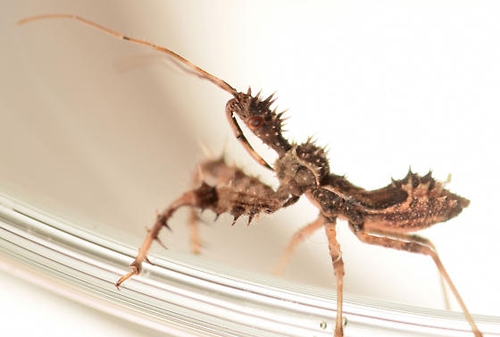
- Author: Mark P Bolda
- Author: Mohammad Aghaee
Close readers of this blog will know that last year Mark noted toward the end of the season a very unusual looking insect in two of his strawberry research plots, which UCCE Entomologist on the Central Coast at the time Kirsten Pearson identified as the “spiny assassin bug”, an insect in the family Reduviidae of the order Hemiptera which includes insects very familiar to us like lygus bugs, minute pirate bugs, damsel bugs and big-eyed bugs.
These are not a common insect to find, and according to the literature are mostly found in meadows and weedy fields. At the time, Kirsten pointed out that these bugs being so few in number and generalist predators, meaning in strawberry along with lygus bugs they likely prey on all the above-named insects as well as ants and spiders.
Prey are killed by injection of saliva through their three segmented proboscis, and subsequently the internal organs of the prey is digested “pre-orally” so that the assassin bug can ingest it. This is fairly similar to the digestion method of lygus bug, which consumes plant matter much in the same way.
We can share a little bit about the biology of the assassin bugs. The eggs are deposited singly or in groups and are possibly covered by a glutenous substance by the female. Our reading of the literature indicates that there are not many eggs laid per individual bug, and there is only one generation of them in a single year.
On the whole, while an interesting and fierce looking predator in strawberry, given the information we have here, it seems doubtful given their low numbers that these assassin bugs could become a beneficial of much consequence in a program of prey management in strawberry. However, it is worth emphasizing as Kirsten did when we first starting finding them, that their presence does imply a level of healthy biodiversity in the field.


